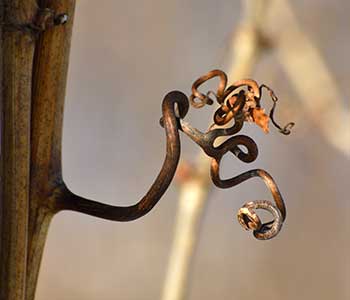
What does the younger generation think about wine?
Here are the figures, data and facts from the presentation by Heidi Thyri, Senior Research Consultant at marketmind, on the topic of ‘What does the young generation in Austria think about wine’ at the ÖWM Marketing Day on 30 January 2025.
The younger generations - Generation Z (born between 1995 and 2012) and millennials (born between 1981 and 1995) consume less wine. They enjoy wine differently - in a more relaxed and unconcerned way. They are hardly interested in discussions about vintages and ageings, nor do they spend a fortune on wine, as their parents' generation did. There is a lot of discussion and writing about this, as has already been done here on other occasions. On behalf of the ÖWM, a study was commissioned from the market research institute marketmind to find out what 20 to 35-year-olds think about wine and how and where they can be reached. The results were presented at the annual Marketing Day in Vienna and online.
FACTS, FIGURES, DATA at a glanceA total of 742 people of this age were surveyed in order to recruit 500 wine drinkers. Incidentally, more men than women consume beer, but the same number of men and women drink wine.
They drink
- 84% generally alcohol
- 67% wine
- 56% beer
- 53% cocktails
- 44% spririts
- 28% energy drinks
- 26% Non-alcoholic alternatives
- 3% others
- 16% no alcohol
- 44% drank wine once a week in 2024
- 53% still did so in 2001
Attractiveness of wine. For the majority (= 58%), wine is considered attractive. The reasons for this:
- Taste/smell/aroma = 46%
- Socialising/conversations = 29%
- Relaxation/cosiness = 20%
- Goes well with food = 19%
- Prestige/image = 15% (noble/special/elegant/stylish)
In general, wine is likely to become more attractive again for the younger group (Gen. Z).
Celebrations and activities are the biggest occasions for enjoying wine. Wine is drunk by 20 to 35-year-old- at private parties = 63%
- with friends or acquaintances = 56%
- on romantic occasions = 55%
- on festive days such as Christmas or Easter = 55%
- for a meal in a restaurant = 54%
- at a wine tavern (Heuriger) = 43%
- privately at home = 42%
- when going out in a pub = 41%
- when travelling to try something new = 37%
- at cookery evenings/theme evenings = 35%
- at barbecues = 34%
- at wine tastings = 33%
- outdoors = 18%
- other = 1%
Here, too, there are differences between millennials and Gen Z: Gen Z tends to drink wine more often on romantic occasions, holidays and restaurant visits. Millennials drink proportionally more wine at home.
What do we see in terms of purchasing behaviour and stocks at home?- 8% buy 2 to 5 bottles a month
- 48% have 2 to 5 bottles in stock at home
- 42% drink 2 to 5 glasses when visiting a restaurant
Which wine group is preferred? White wine is clearly the favourite!
- white wine = 69 %
- red wine = 41 % (eher die Älteren greifen zu RW)
- rosé = 35 %
-
sparkling = 17 %
- fruity, flowery = 64%
- simple, light, fresh = 51%
- semi-dry, sweetish = 46%
- high quality, artisanal = 27%
- strong, full-bodied = 20%
- dry = 19%
- savoury, mineral = 13%
- don't know = 4 %
Preference for Austrian or foreign wines? The young generation prefers to drink
- Wine from Austria = 48%
- Wine from abroad = 2%
- both = 50%
- regional, local
- better flavour, special
- better/higher quality (and quality control)
- good for the local economy/vintners
- close ties to the homeland
Among Gen Z, the tendency to favour local wines is even stronger.
Subjective knowledge and wine expertise from personal experience:- 22% think that they know wine very well or well
- 29% are attributed this knowledge from their personal environment
- riends and acquaintances = 46%
- Supermarket = 30%
- Local/restaurant = 28%
- Wine tavern/events/winemakers = 25%
- Specialist wine shop or vinotheque = 23%
- Presentations/tastings/festivals = 19%
- Discussions with winemakers and experts = 17%
- Wine & food festivals = 17%
- Social media = 13%
- Specialised trade = 13%
- TV/radio = 10%
- Trade magazines/books = 10%
- Online streaming platforms = 9%
- Wine app = 8%
- Daily newspapers/magazines = 8%
- Podcasts = 8%
- Blogs/forums = 8%
- Influencers = 7%
- Other = 2%
- none = 12%
Exciting results. I would have attributed more influence to influencers, as well as to social media. The latter and the daily newspapers are somewhat more popular with Gen Z; wine taverns/events, conversations with winemakers and presentations are more popular with millennials.
The supermarket scores highly when it comes to wine purchases! The young ones buy here:- Supermarket = 69%
- at the winery = 38%
- in specialised shops/vinotheques = 34%
- Online shops/wine dispatch via online platforms = 17%
- Wine auctions = 7%
- Online subscription = 6%
- other sources of supply = 1%
- do not buy wine from the farm/retail = 3%
The italicised sources are increasingly being used by millennials. And it's a good thing that many wineries have started supplying food retailers during the pandemic. This is obviously paying off for the younger generation.
- Good experience so far = 62%
- Taste, digestibility = 58%
- Value for money = 54%
- Food pairing = 46%
- Recommendations from people in the area = 43%
- Origin of wines = 38%
- Recommendation of sommelier/sommelière = 38%
- Grape variety = 35%
- Winery, wine brand, branding = 35%
- Promotions = 30%
- Alcohol content = 30%
- Storage, ageing (stainless steel tank, barrique) = 29%
- Residual sugar, acidity = 29%
- Vineyards, vineyard names = 28%
- Details of soil, geology = 27%
- Vintage = 24%
- Bottle shape, label = 20%.
According to Heidi Thyri, the role of the sommelier should not be underestimated, as their expertise is highly valued. And young people are happy to stick with wines they like and that offer good value for money.
What are the young generation's motives for drinking wine? Over 50 % prefer to drink wine in good company!- Like to drink wine in good company = 53%
- Wine is just part of the occasion = 50%
- Wine makes romantic evenings special = 47%
- Drink wine to broaden my palate = 42%
- Appreciate wine as an artisanal, natural product = 38%
- Like to drink wine with friends, to share = 38%
- A good glass of wine goes well with good food = 37%
- Wine is a piece of home for me = 36%
- Sometimes choose a special glass of wine as a luxury = 36%
- Certain wines remind me of special moments/travels = 36%
- Wine is a cool drink that should not be missing from any party/celebration = 34%
- A glass of wine is a good way to unwind after a long day = 34%
- I come from a wine region, so drinking wine is natural = 31%
- I am interested in the history and production of wine = 27%
- Look for environmentally friendly and sustainable production when buying = 26%
- Collect special wines if they taste good and can be valuable = 21%.
The penultimate item is somewhat surprisingly low at 26%, as you might expect the younger generation to be more interested in sustainability and organic production. Millennials are most likely to be interested in these topics, as well as collecting wine, wine as a luxury product and wine as a special memory. Gen Z, on the other hand, is more inspired by the first three motives, and is enjoying wine with friends and at parties.
Marketmind identified several groups in the course of the analysis:- CHILL TASTERS = 20.4%. They like to eat out, like to eat at home and like to try new things. | More likely to be female, millennials, at home in Vorarlberg and Vienna.
- SOCIAL DRINKERS = 24.8%. Enjoying, joining in, celebrating with friends. Wine is a cool (party) drink. The largest group, tends to be female and Gen Z, the youngest group, increasingly still in education.
- WINE ENTHUSIASTS = 15.2%. Experts, also referred to as such by friends, interested in history and production (environmentally friendly and sustainable), collectors. | Older and male, millennials, the most educated of all the segments.
- LOCAL LOYALISTS = 19.4%. Comes from a wine region, wine is part of their identity, knows their way around. | Rather older and male (millennials), above average in Lower Austria and Styria.
- MEMORY MAKERS = 16.9%. Wine is for special moments, can cost a bit. "I treat myself", occasion-related (romantic occasions, travel, luxury). | Rather older and male (millennials), above average in Burgenland and Styria.
-
SOCIAL SIPPERS. The youngest and largest segment.
Topics: Society, fun, celebrations, work/life.
➞ reachable via young digital media, influencers, events -
CHILL TASTERS. Large segment, slightly older, hedonistic, indulgent.
Topics: Food, wine, close friends, relaxation.
➞ reachable through general media, including trade media. -
LOCAL LOYALISTS. Middle segment, slightly older, Lower Austria, Styria. Wine as part of daily life.
Topics: Wine tasting, production, history, festivals.
➞ reachable via wine taverns, regional media and events, from the farm, youth organisations. -
WINE ENTHUSIASTS. Smaller segment, high quality, sustainable, hedonistic, pleasurable.
Topics: Luxury, environmental awareness, speciality, production.
➞ reachable through specialist retailers, direct from the farm, restaurants, tastings, wine tourism.
All in all, a very interesting and relevant study for the market. Due to the relevant data, the planned shorter summary had to give way to a more detailed reproduction. I hope that ÖWM and marketmind will forgive me.




